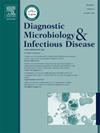诊断过去的感染:综述
IF 2.1
4区 医学
Q3 INFECTIOUS DISEASES
Diagnostic microbiology and infectious disease
Pub Date : 2025-06-03
DOI:10.1016/j.diagmicrobio.2025.116933
引用次数: 0
摘要
古代传染病的诊断取得了显著进展,对了解历史上的健康挑战和塑造医学研究作出了重大贡献。这篇综述探讨了诊断方法的演变和新兴诊断技术的特点。古代传染病的早期发现主要依靠观察证据、骨骼遗骸和历史记录。14世纪的黑死病和天花等著名疾病的爆发都留下了历史印记。开创性的诊断方法包括对骨骼残骸和组织病变的古病理学分析。后来,微生物学方法适应于古代材料,包括PCR、血清学和免疫检测等分子和血清学技术,以古微生物学方法的名义检测古代病原体的DNA或抗体。这是一个独特的领域,使得从保存的样本中分离和鉴定古代病原体成为可能。下一代测序技术的进步正在彻底改变古代疾病的诊断,使人们能够从保存完好的样本(如牙髓、牙垢、骨骼和木乃伊组织)中检索古代病原体基因组,从而帮助了解疾病的演变和传播模式。DNA测序和宏基因组学的不断改进将提高古代疾病诊断的准确性和范围。考古学家、历史学家、古微生物学家、遗传学家和流行病学家之间的合作将推动进一步的突破。古细胞学、宏基因组分析的进展,包括非侵入性技术,如质谱分析,可能为鉴定古代病原体提供新的途径。目前的技术和跨学科合作有望从过去发现更多的见解,并可能为未来的疾病预防战略提供信息。本文章由计算机程序翻译,如有差异,请以英文原文为准。
Diagnosing past infections: A review
Diagnosis of ancient infectious diseases has seen remarkable advances, contributing significantly to understanding historical health challenges and shaping medical research. This review explores the evolution of diagnostic methods and features emerging diagnostic techniques. The early detection of ancient infectious diseases primarily relied on observational evidence, skeletal remains, and historical records. Notable outbreaks such as the Black Death in the 14th century and smallpox epidemics, have left historical imprints. Pioneering diagnostic methods included the paleopathological analysis of the remains of bones and tissue lesions. Later, microbiology methods were adapted to ancient materials, including molecular and serological techniques such as PCR, serology and immunodetection, which were employed to detect DNA or antibodies from ancient pathogens under the name of the paleomicrobiology approach. This emerged as a distinct field, making it possible to isolate and identify ancient pathogens from preserved samples. Advances in next generation sequencing are now revolutionising the diagnosis of ancient diseases, enabling the retrieval of ancient pathogen genomes from well-preserved samples such as dental pulp, tartar, bone and mummified tissues, helping understand disease evolution and transmission patterns. Ongoing improvements in DNA sequencing and metagenomics will enhance the accuracy and scope of the diagnosis of ancient diseases. Collaboration between archaeologists, historians, paleomicrobiologists, geneticists and epidemiologists will drive further breakthroughs. Advances in paleocytology, metagenomic analysis, including non-invasive techniques, such as mass spectrometry, may offer new avenues for identifying ancient pathogens. Current technologies and interdisciplinary collaboration hold promise for uncovering even more insights from the past and potentially informing future disease prevention strategies.
求助全文
通过发布文献求助,成功后即可免费获取论文全文。
去求助
来源期刊
CiteScore
5.30
自引率
3.40%
发文量
149
审稿时长
56 days
期刊介绍:
Diagnostic Microbiology and Infectious Disease keeps you informed of the latest developments in clinical microbiology and the diagnosis and treatment of infectious diseases. Packed with rigorously peer-reviewed articles and studies in bacteriology, immunology, immunoserology, infectious diseases, mycology, parasitology, and virology, the journal examines new procedures, unusual cases, controversial issues, and important new literature. Diagnostic Microbiology and Infectious Disease distinguished independent editorial board, consisting of experts from many medical specialties, ensures you extensive and authoritative coverage.

 求助内容:
求助内容: 应助结果提醒方式:
应助结果提醒方式:


